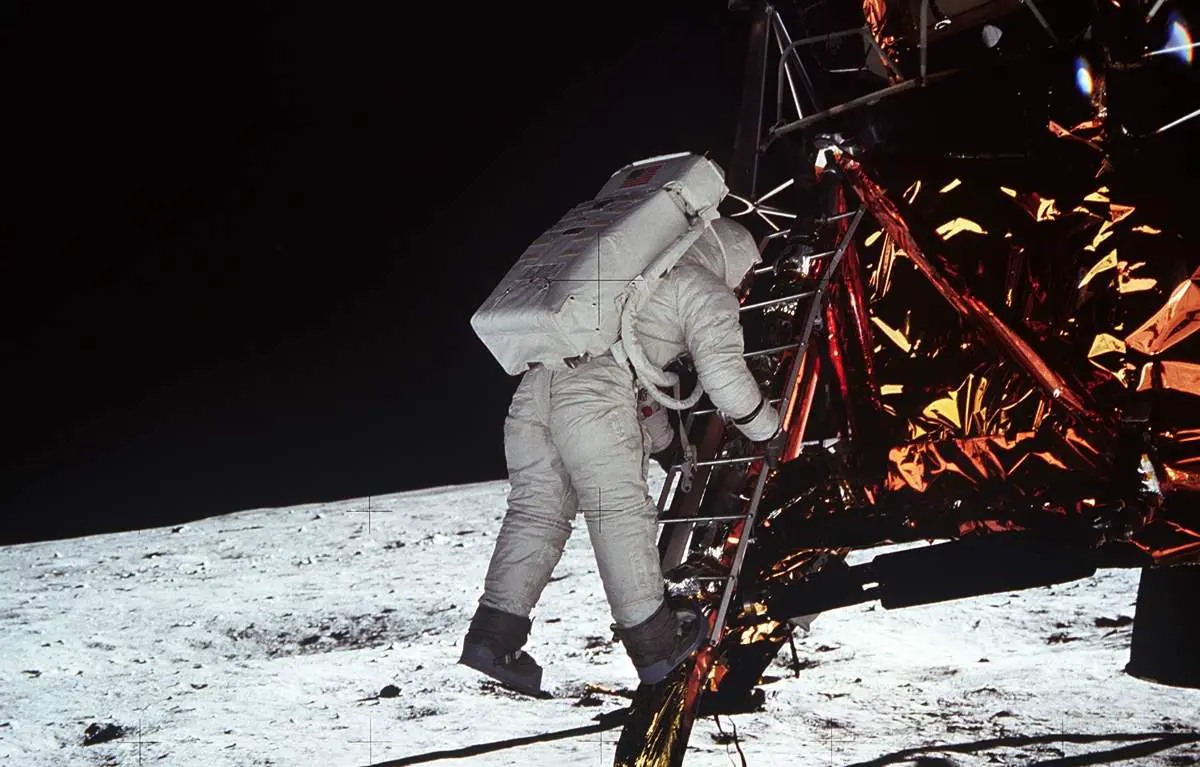On January 3, 2019, China’s lunar lander and rover Chang’e 4 achieved the first soft landing on the far side of the Moon in the history of humanity’s space exploration. It’s a space exploration success no nation or space agency (including NASA) has accomplished even as of January 2023.
January 3 story of what happened this day in Science, Technology, Astronomy, and Space Exploration history.
Chang’e 4: the first spacecraft to land on the far side of the moon
Launched on December 7, 2018, China’s lunar lander and rover Chang’e 4 achieved the first soft landing on the far side of the Moon in the history of humanity’s space exploration on January 3, 2019.
Chang’e 4 landed the robotic rover in the unexplored South Pole-Aitken basin, the largest, oldest, and deepest crater on the lunar surface. At roughly 2,500 kilometers (1,600 mi) in diameter and 13 kilometers (8.1 miles) deep, it is also one of the largest known impact craters in the Solar System.

The lander has a dry mass of 1.2 tons, carrying its own experiments and the rover. The experiments include:
- A low-frequency (0.1 – 40 MHz) radio spectrometer (LFS)
- A landing Camera (LCAM)
- A terrain Camera (TCAM)
- A Lunar Lander Neutrons and Dosimetry Experiment (LND)
- A biological experiment.
The mission includes a rover, Yutu 2, based on the Chang’e 3 Yutu (“Jade Rabbit”) rover. The rover, with a total mass of 140 kg (309 lbs), has a rectangular body 1.1 meters high (3 feet and 7 inches), 1.5 meters long (4 feet 11 inches), and 1 meter (3 feet 3 inches) wide, but unlike the Chang’e-3 rover has not a robotic arm.
These missions are named after Chang’e, the goddess of the Moon in Chinese mythology.
It has 6 wheels, two solar panels, and a dish antenna. Its scientific payload comprises cameras, including a Panoramic Camera (PCAM), a Visible/Near-Infrared Imaging Spectrometer (VNIS), Lunar Penetrating Radar (LPR), and the Advanced Small Analyzer for Neutrals (ASAN).
Chang’e-4 uses a communication relay satellite, in a halo orbit around the Earth-Moon L2 point to maintain communication between the lander and Earth ground control. The satellite, Queqiao (meaning “Magpie Bridge”), based on the Chang’e 2 design, was launched on May 20, 2018, to enable communication with the far side. It is a key component of Chang’e 4 lunar landing mission. Two scientific microsatellites, Longjiang-1 and Longjiang-2, were launched with Queqiao.

Related: Moon landings – all-time list
As of January 2023, Chang’e 4 is still operational.

Sources
- Space Shuttle Endeavour’s Touchdown Meets Columbia’s Salute [An amazing photo from the past] - February 29, 2024
- Moon Landings: All-Time List [1966-2024] - February 23, 2024
- From Orbit to Ordinary: 10 Earthly Applications of Space Technology - January 23, 2024

